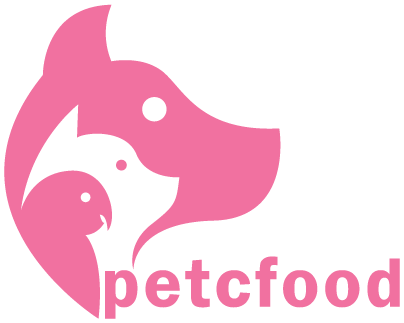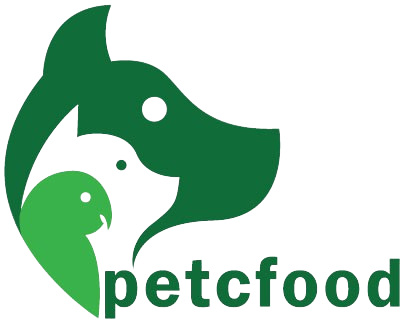Introduction to the importance of selecting the right food for older dogs
Choosing the right food for older dogs is key. It ensures their health and long life. As dogs age, their needs change. They need a diet that meets their new requirements. Choosing the right diet is very important for senior dogs. The right food can affect their well-being, energy, and immune system.
Older dogs often have common health issues. These include joint pain, obesity, and decreased organ function. A diet has many essential nutrients, vitamins, and minerals. It should be tailored to their age-related needs. It can help reduce these issues. For example, foods with lots of omega-3 fatty acids are good for joints. Diets low in calories but high in fiber can help manage weight. Also, senior Best Dog Food for Older Dogs is specialized. They include components to support heart and kidney health.
Also, the taste and digestibility of food are important. They play a big role in the nutrition of older dogs. As dogs age, their sense of taste and digestive efficiency may decline. Choosing easy-to-digest foods with good flavors ensures that senior dogs keep their appetite. They will also get the nutrientsnts they need for their health.
In conclusion, picking the right food for older dogs is a key decision. It has big effects on their pets’ health, comfort, and quality of life. Owners can help their senior dogs enjoy their golden years with vitality and happiness. They can do this by focusing on balanced, age-appropriate diets.
overview of dietary requirements specific to older dogs

Understanding the dietary needs of older dogs is essential. It helps maintain their health and energy in their golden years. As dogs age, their metabolism slows down. Their nutritional needs change. So, pet owners must adjust their diets. This overview highlights the key dietary considerations for older dogs. They ensure the dogs get the best nutrition tailored to their needs.
Older dogs need fewer calories than younger ones. This is because they are less active and have a slower metabolism. But, you must eat a balanced diet. It must provide all the needed nutrients without causing weight gain. Obesity in older dogs can make health issues worse. These issues include arthritis and diabetes. So, managing weight is a top priority.
Protein is a vital component of an older dog’s diet. High-quality protein supports muscle maintenance and health. But, the protein amount should be regulated. This is especially true for dogs with kidney issues. Too much protein can strain the kidneys. Consulting with a veterinarian can help determine the right balance.
Another key part of an older dog’s diet is including essential fatty acids. These include omega-3s and omega-6s. These nutrients are key for maintaining healthy joints, skin, and coat. They also reduce inflammation. This can help ease arthritis, a common ailment in senior dogs.
Fiber is important for an older dog’s diet. It aids digestion and prevents constipation. Fibre-rich diets can also help manage blood sugar. This is great for diabetic dogs.
Vitamins and minerals must be balanced in the diet of older dogs. For instance, vitamins E and C are antioxidants. They can boost the immune system and fight age-related decline. Additionally, supplements or foods are rich in glucosamine and chondroitin. They can support joint health and mobility.
Hydration is paramount for older dogs. Ensuring easy access to fresh, clean water is vital. Older dogs may be especially prone to dehydration. Wet food can also contribute to their daily water intake.
the dietary requirements of older dogs are distinct and need careful consideration. By focusing on a balanced diet that meets their pets’ needs, owners can improve the pets’ quality of life. They can also increase how long they live. It’s always good to consult with a vet for personalized dietary recommendations. They can cater to the special needs of older dogs.
Detailed discussion on essential nutrients

A detailed discussion on essential nutrients is vital. It helps us understand the basis of good health and wellness. Essential nutrients are things our bodies can’t make enough of. So, we need to get them from our diet. They include vitamins, minerals, amino acids (proteins), fatty acids, and carbohydrates. Each has a unique role. It maintains functions, supports growth, and prevents diseases.
Vitamins are crucial. There are two types: water-soluble ones, like vitamins C and B-complex, and fat-soluble ones, like vitamins A, D, E, and K. They are crucial for processes such as making energy, immune function, and blood clotting. Lacking vitamins can cause many health issues. This shows the importance of a balanced diet. Such a diet should be rich in fruits, vegetables, and whole grains.
Calcium, potassium, and iron are minerals. They support many functions, like bone health, muscle function, and oxygen transport. Eating a variety of foods helps. It should include leafy greens, dairy, and lean meats. This can help meet mineral needs.
Proteins break down into amino acids. They are the body’s building blocks. Amino acids are essential for growth, repair, and cell maintenance. High-quality protein sources include meat, fish, and eggs. For those on a plant-based diet, they include beans and lentils.
Fats are vital for brain and heart health. This is especially true for omega-3 and omega-6 fatty acids. Sources include fish, nuts, and seeds.
Carbs are the body’s primary energy source. This shows the need for whole grains, fruits, and veggies in daily meals.
A deep understanding of key nutrients shows their importance in a balanced diet. This leads to good health and disease prevention.
How diet can help with joint health issues in older dogs

Diet is key in managing health issues in older dogs. It offers a natural way to ease symptoms and improve well-being. As dogs age, they face many health challenges. These include joint problems, obesity, heart disease, and kidney issues. Adapting their diet to address these concerns can improve their quality of life.
For joint health, eat foods rich in omega-3s, like fish oil. They reduce inflammation and ease arthritis pain. Omega-3s support joint lubrication and can slow the progression of degenerative joint disease. Also, diets with added glucosamine and chondroitin repair cartilage. They also keep joints healthy.
Managing weight is crucial for older dogs. Obesity makes many health issues worse, including diabetes and heart disease. Feeding a balanced diet helps manage weight. It should have the right calories. It should be rich in fibre but low in fat. Fiber aids in digestion and promotes a feeling of fullness, preventing overeating.
For heart health, eat diets low in sodium. They should be rich in vitamins C and E, which are antioxidants. These nutrients support cardiovascular function. Antioxidants help fight oxidative stress. It is a factor in heart disease. They improve heart health and boost the immune response.
Eating less protein can support kidney health. High protein levels strain the kidneys. Providing foods with high-quality, digestible protein in moderate amounts helps cut kidney workload.
Addressing common health issues in older dogs requires dietary adjustments. This is a proactive way to care for them. Consult with a vet to tailor a diet for your dog’s needs. It can improve their health and happiness.
Curated list of the best dog food brands and products

Finding the best dog food brands and products is crucial. It’s for pet owners who want to give their furry friends the best nutrition and care. This curated list features top-rated dog food brands. They are known for their quality ingredients. They also have complete, healthy pet food.
1. Orijen
Orijen is renowned for its appropriate dog foods. Their recipes boast fresh, regional ingredients. These ingredients match the amount, freshness, and variety of meats. Dogs evolved to eat them. Their products are rich in protein and low in carbohydrates to match a dog’s natural diet.
2. Blue Buffalo
Blue Buffalo offers many formulas. They are tailored to specific life stages, dietary needs, and health conditions. It is a favorite among pet owners. Their products feature real meat first. They also include wholesome grains, fruits, and vegetables.
3. Royal Canin
Royal Canin emphasizes pet health and nutrition. They provide precise, breed-specific formulas. These are designed to meet the unique needs of different dog breeds. Their diets are made with veterinarians. They offer support for specific health concerns.
4. Hill’s Science Diet
Veterinarians recommend Hill’s Science Diet. It focuses on biology-based nutrition. The diet offers proven products that support dogs’ health at every life stage. Their recipes address specific health issues. For example, they target digestive health and weight management.
5. Wellness Natural Pet Food
Wellness is known for its natural ingredients and lack of artificial additives. It offers many dog foods. They include grain-free and limited ingredient recipes. These foods support a healthy lifestyle.
Choosing a brand from this list ensures you feed your dog high-quality food. It supports their health and well-being. Always ask a vet before changing your pet’s diet. This is to ensure it meets their specific nutritional needs.
Comparison and when each is appropriate
Comparing dog food options is crucial. Pet owners want to give the best nutrition to their furry friends. They must also understand when each option is best. This comparison outlines key differences between dry, wet, and raw dog foods. It will help you make informed decisions based on your dog’s needs.
Dry Dog Food:
It is ideal for pet owners who want convenience and a long shelf life. Dry kibble is the cheapest choice. It promotes dental health. It reduces plaque buildup by the chewing action. Dry food is good for dogs. They have no dietary restrictions or health issues. It has balanced nutrition for daily feeding.
Wet Dog Food:
Wet dog food has more moisture. This is good for hydration and may be tastier for picky eaters or older dogs with a decreased sense of smell. Many people recommend it for dogs with special diets. These are due to health conditions like kidney disease. The extra moisture can help with hydration. Wet food can be more expensive and less convenient but is a great option for specific dietary needs.
Raw Dog Food:
Advocates of raw feeding believe it offers a diet more like what dogs would eat in the wild. It could lead to shinier coats, healthier skin, and better dental health. But, it needs careful handling to avoid bacteria. It may not be suitable for all dogs, especially those with weak immune systems. Feed your dog a raw diet. It’s best for owners who are committed to meeting their pet’s needs.
Choosing the right dog food depends on many factors. These include your dog’s age, health, and diet. Talking to a vet can help find the best diet for your dog. It will support their health and wellness.
Food recommendations for dogs with health issues like arthritis, obesity, etc.
Dogs often grapple with health issues like arthritis, obesity, and other chronic conditions. Picking the right food is key to managing their symptoms and improving their quality of life. This guide provides food recommendations tailored to fix these common canine health issues. They ensure your furry friend gets the nutrition they need.
Arthritis:
Dogs with arthritis enjoy diets rich in omega-3 fatty acids. Omega-3s are known for fighting inflammation. Foods with fish oil, flaxseed, or chia seeds can reduce joint pain. They can also improve mobility. You should also take supplements with glucosamine and chondroitin. They help joint health and cartilage repair. Look for dog foods formulated for joint health.
Obesity:
Managing weight is crucial for obese dogs. Excess weight can worsen health problems like arthritis and diabetes. Opt for low-calorie, high-fiber dog foods that promote satiety without the extra calories. These foods have lean proteins and complex carbs. They include foods like sweet potatoes and vegetables. They support a healthy metabolism while keeping your dog full. Regular vet check-ups are vital. They let us check progress and adjust the diet.
Diabetes:
Dogs with diabetes need a diet that helps regulate blood sugar levels. Foods low in fat have much high-quality proteins and complex carbs. They can help manage blood sugar. Avoid foods with simple sugars and excessive carbohydrates. Feeding schedules and part control are key. They help manage diabetes through diet.
Always ask a vet before changing a dog’s diet. This is especially true for dogs with health issues. A tailored diet can help. You should combine it with medical treatment and regular exercise. This mix can improve your dog’s health and well-being.
Guidelines and recipes for homemade dog food
Making homemade dog food lets pet owners tailor meals to their furry friend’s diet and tastes. This approach uses whole, fresh ingredients. It offers a healthy alternative to commercial dog foods. Follow these guidelines. Use simple recipes to start cooking healthy homemade meals for your dog.
Guidelines for Homemade Dog Food:
1. Balance is Key:
Ensure meals are balanced. They should have the right mix of protein, carbs, and fats. Include a variety of ingredients to cover a range of vitamins and minerals.
2. Consult a Veterinarian:
Before making the switch to homemade food, consult with a vet or a pet nutritionist. They will ensure the diet meets your dog’s specific health needs.
3. Cook Proteins Thoroughly:
Use lean meats, like chicken, turkey, or beef. Cook them well to avoid infections.
4. Incorporate Vegetables:
Carrots, green beans, and peas are non-toxic. They are great sources of fiber and vitamins. Ensure they are cooked and pureed for easy digestion.
5. Limit Certain Foods:
Avoid onions, garlic, chocolate, grapes, and other foods toxic to dogs. Also, be cautious with dairy and high-fat foods.
Simple Homemade Dog Food Recipe:
1.5 cups of cooked lean meat (chicken, turkey, beef)
1 cup of cooked brown rice
1 cup of pureed vegetables (carrots, green beans)
1 tablespoon of fish oil for omega-3 fatty acids
Mix all ingredients in a bowl, ensuring the food is cooled to room temperature before serving. Adjust portions according to your dog’s size, age, and activity level.
Embracing homemade dog food can lead to a happier, healthier life for your pet. It can also foster a deeper bond between you and your dog. Always watch your dog’s health. Adjust recipes as needed to meet their changing nutritional needs.
Advantages of making your dog’s food at home
Many pet owners make their dog’s food at home. It has surged in popularity among those who want to offer their furry friends the best nutrition. This way of caring for pets has many benefits. It ensures that dogs get wholesome, balanced meals. The meals are tailored to their specific health needs and preferences.
Customization and Control:
One big benefit of homemade dog food is the ability to control every ingredient in your dog’s bowl. This is particularly beneficial for pets with allergies, sensitivities, or specific dietary requirements. Homemade meals allow for customization. This lets you avoid allergens and additives that might be in commercial dog foods.
Fresh and Nutritious:
Preparing meals at home ensures fresh, high-quality ingredients. Store-bought options often contain preservatives and fillers. This means your dog enjoys more natural, nutrient-rich meals. These can improve digestion, make coats shinier, and lead to better health.
Cost-Effectiveness:
While it might seem like a premium option, making dog food at home can be cost-effective in the long run. Buying ingredients in bulk and choosing seasonal produce can help manage expenses. They offer a way to provide great nutrition.
Bonding Experience:
The act of preparing your dog’s meals can deepen the bond between pet and owner. It’s a caring gesture. It shows your commitment to their well-being and deepens the emotional connection.
Peace of Mind: Knowing exactly what your dog is eating provides peace of mind. This oversight is direct. It eliminates worry about recalls or bad ingredients in some dog foods.
Homemade dog food is tailored, nutritious, and cheap. It’s an option for pet owners who want the best for their dogs. Always consult with a vet. They will ensure your homemade diet meets your dog’s nutritional needs.
What to include in homemade dog food
Are you considering making homemade dog food for your furry friend? Making healthy meals at home is a great way to ensure your dog gets a diet balanced for their needs. When making homemade dog food, be sure to use many ingredients. Dogs need this variety to get the nutrients they need.
Start with a good protein source. This could be lean meats (chicken, turkey, beef) or fish. They provide amino acids for muscle health. Incorporate carbohydrates like brown rice, sweet potatoes, or quinoa for sustained energy levels. Don’t forget healthy fats. They come from sources like olive oil or salmon. They promote a shiny coat and well-being.
Include a mix of vegetables. It should have spinach, carrots, and peas. They provide vitamins, minerals, and fiber for digestion. Adding fruits like apples or blueberries can offer antioxidants and additional nutrients. Finally, consider supplements. Take calcium for bones and omega-3 for the heart.
Remember to ask your veterinarian or a canine nutritionist for help. They will ensure your homemade dog food meets your pet’s dietary needs. Add these key ingredients. They will give your furry friend balanced and wholesome meals. This will help their health and happiness.
Step-by-step guide on changing dog foods
Transitioning your dog to a new food requires a careful approach. This is to avoid digestive upset and ensure a smooth change. Follow these simple steps to switch your canine companion’s diet:
1. Gradual Transition: Begin by mixing small amounts of the new food with their current food. Start with a ratio of 25% new food to 75% old food for a few days.
2. Monitor Reaction: Pay close attention to your dog’s response to the new food. Look for any signs of digestive issues,such as vomiting, diarrhea, or changes in appetite.
3. Slowly Increase Proportion: Over the course of about a week, gradually increase the proportion of the new food while decreasing the old food. Aim for a 50/50 ratio by the end of the first week.
4. Complete Transition: By the second week, your dog should be primarily eating the new food. Continue to monitor their reaction and adjust the ratio as needed until they are fully transitioned.
5. Patience and Consistency: Be patient throughout the process and maintain consistency in feeding times and portions. Avoid sudden changes or mixing too many new foods at once.
By following these steps and allowing your dog’s digestive system time to adjust, you can successfully transition them to a new food without causing any unnecessary stress or discomfort.
Tips for observing changes and adjusting the diet as needed
Ensuring your dog’s diet is optimal involves more than just selecting the right food initially; it also requires careful observation and occasional adjustments. Here are some valuable tips for observing changes and fine-tuning your dog’s diet as needed:
1. Regular Health Checks: Schedule regular check-ups with your veterinarian to monitor your dog’s overall health and weight. They can provide insights into any dietary adjustments needed based on your dog’s age, breed, and health status.
2. Watch for Behavioral Changes: Keep an eye on your dog’s behavior, energy levels, and mood. Changes such as lethargy, excessive thirst, or unusual aggression could indicate dietary imbalances or health issues that need attention.
3. Monitor Stool Quality: Pay attention to the quality and consistency of your dog’s stools. Loose stools or diarrhea may signal digestive issues or food intolerances, while consistently hard stools could indicate insufficient fiber intake.
4. Adjust Portions Accordingly: As your dog’s activity level, age, or metabolism changes, adjust their food portions accordingly. Overfeeding can lead to obesity and health problems, while underfeeding may result in malnutrition.
5. Trial and Error: If you suspect a specific ingredient is causing adverse reactions in your dog, try eliminating it from their diet and observing any improvements. Similarly, introduce new foods gradually to assess their tolerance.
6. Consult a Professional: If you’re unsure about making dietary changes or if your dog has specific health concerns, seek guidance from a qualified veterinarian or veterinary nutritionist. They can offer personalized recommendations based on your dog’s unique needs.
By staying vigilant and responsive to your dog’s cues, you can ensure they receive the best possible nutrition and enjoy optimal health and well-being throughout their lives.
Answers to common questions about feeding older dogs
How does an older dog’s nutritional needs differ from a younger dog’s?
As dogs age, their metabolism slows down, and they may become less active. Therefore, older dogs typically require fewer calories to maintain a healthy weight. Additionally, they may benefit from diets rich in protein to support muscle mass maintenance and joint health.
Should I switch to a senior-specific dog food?
Senior-specific dog foods are formulated to address the unique nutritional requirements of aging dogs. These foods often contain lower calorie content, higher levels of joint-supporting nutrients like glucosamine and chondroitin, and antioxidants to support immune function. Consulting with your veterinarian can help determine if a senior formula is appropriate for your dog.
How can I help my older dog maintain a healthy weight?
Monitoring your dog’s weight regularly and adjusting their portion sizes accordingly can help prevent obesity, which is common in older dogs. Additionally, consider feeding smaller, more frequent meals to aid digestion and prevent overeating. Incorporating low-calorie, nutrient-dense treats and providing regular exercise tailored to your dog’s abilities can also support weight management.
Are there any dietary supplements recommended for older dogs?
Supplements such as omega-3 fatty acids, glucosamine, and chondroitin sulfate can promote joint health and mobility in older dogs. Additionally, antioxidants like vitamins C and E may help support immune function and cognitive health. However, it’s essential to consult with your veterinarian before adding any supplements to your dog’s diet to ensure they are safe and appropriate.
Summarizing the key points of choosing the best dog food for older dogs
You must understand the changing nutrient needs of older dogs to choose their best food. Choose senior-specific formulas with fewer calories. They support weight management and have more joint-supporting nutrients. These include glucosamine and chondroitin. Look for protein-rich diets. They help maintain muscle mass. Also, look for diets with antioxidants. They support immune function and brain health.
Check your dog’s weight. Adjust part sizes . Consider smaller, more frequent meals for better digestion. Adding supplements, such as omega-3 and vitamins C and E, can also help joints. They also promote well-being. Consult with your veterinarian to tailor your older dog’s diet to their needs. This will ensure they continue to thrive in their golden years.















Leave a Review